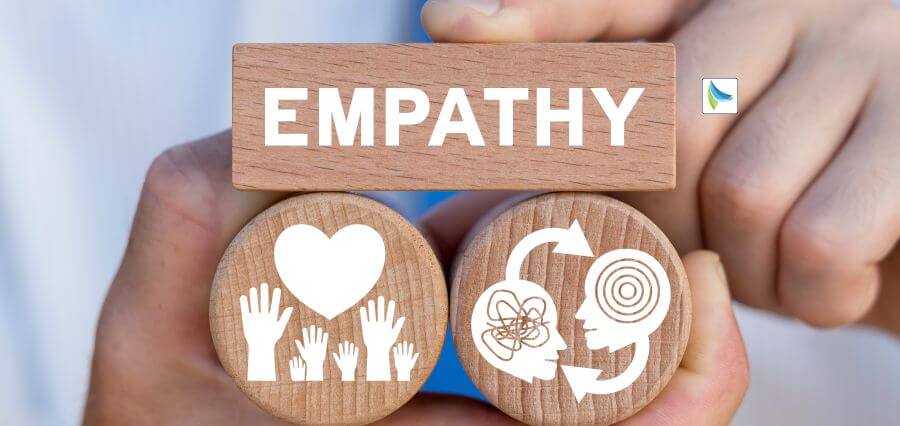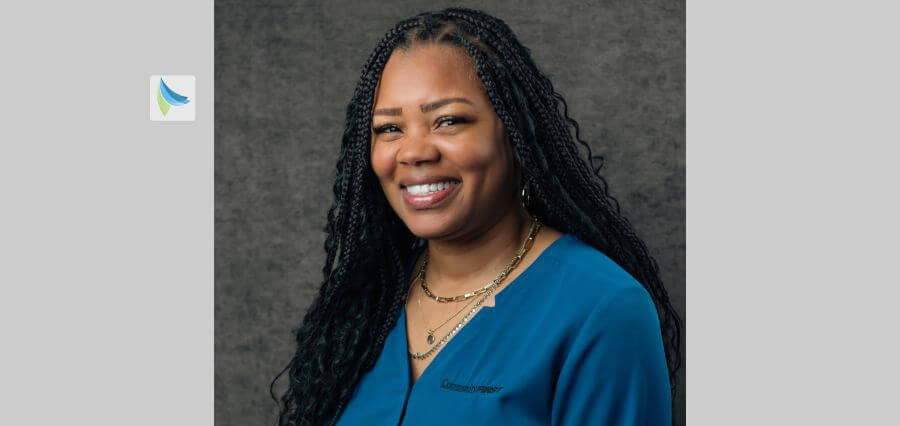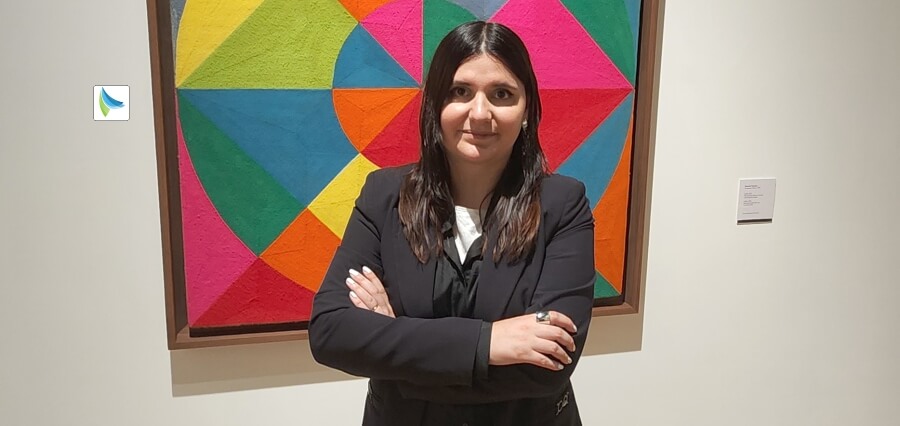Advancing Banking Innovation!
The banking industry continues to grow as an integral force in driving economic stability and growth. Its significance extends beyond managing transactions, encompassing an essential role in empowering communities and fostering financial inclusivity. With advancements in technology and a growing focus on innovation, the industry is transforming to meet the demands of diverse stakeholders.
This evolution has brought opportunities to redefine how financial services are delivered, creating an ecosystem where institutions can actively address societal challenges, such as bridging the gap in financial literacy and improving access to essential banking services for underserved populations. The interplay of tradition and transformation defines this industry’s current phase, paving the way for meaningful societal impact.
As the Chief Administrative Officer (CAO), Carlonda Davis stands for leadership rooted in empathy, strategic thinking, and resilience. Her ability to inspire teams through clear communication and a focus on inclusivity has positioned her as a leader who cultivates trust and engagement.
Carlonda’s strategic initiatives in integrating diversity, equity, and inclusion (DEI) into organizational culture reflect her commitment to building environments where everyone feels valued and empowered. Her transparent and structured leading approach motivates and aligns her team with broader organizational objectives, ensuring sustainable growth and enhanced employee satisfaction.
At Community First Bank of Indiana, these principles are integrated into a comprehensive framework that underscores the institution’s commitment to being a community-centric financial partner. By implementing DEI initiatives into all aspects of its operations, the bank strives to create a culture of inclusivity and accountability, developing workforce diversity and community outreach.
Through targeted programs and strategic metrics, Community First Bank is setting benchmarks in financial literacy, accessibility, and internal engagement. This focus strengthens its organizational culture and reinforces its role as a trusted partner in nurturing economic and social progress within its communities.
Let’s explore Carlonda’s visionary initiatives for transforming financial services:
Strategic DEI Integration in Banking
Integrating DEI initiatives into Community First Bank’s culture requires a thoughtful, strategic approach that aligns with the bank’s mission and values. Carlonda strongly advocates for leadership buy-in, DEI training, and strategy development participation. She has been fortunate to have the program’s support and backing.
A DEI committee was developed, and together, they created a framework that aligns with Community First Bank’s core values. This ensures that DEI is not a standalone initiative but embedded in all business practices, including hiring training, and community outreach. The team reviewed and audited existing policies and practices. They continuously strive to create an environment where all employees feel valued, welcomed, and empowered to contribute.
The team has set internal and external metrics in place to help measure the impact of the work.
Internal Metrics:
- Workforce Representation: Goal – Increase workforce diversity with recruiting efforts.
- Metric: Track and report progress on hiring, promotion, and retention rates for underrepresented groups.
- Employee Engagement and Inclusion: Goal – Enhance employee satisfaction and sense of belonging.
- Metric: Use annual engagement surveys to measure inclusivity and track progress with every survey.
- DEI Education: Goal – Train 100% of staff and leadership on DEI principles and unconscious bias.
- Metric: Track completion rates on annual training and evaluate improvements in awareness and behavior.
External Metrics:
- Community Impact: Goal – Increase financial literacy and access to banking services for underserved communities.
- Metric: Measure participation in outreach programs and the number of new accounts from targeted demographics.
The team has seen an increase in internal and external efforts, especially regarding workforce diversity and community impact. These efforts can result in a more engaged workforce, stronger community relationships, and inclusivity-driven sustainable growth. The aim is to strengthen Community First Bank’s culture and enhance its role as a community-centric financial institution.
Promoting Clear Communication and Trust
Carlonda demonstrates resilience by remaining calm and composed during stressful times through leading by example. Maintaining focus and ensuring the team stays engaged during stress and organizational change requires clear communication, empathy, and strong leadership.
She leads with transparency and communication by setting clear expectations and breaking down intricate tasks into smaller, manageable goals so team members feel a sense of progress. Regular communication helps alleviate uncertainty and builds trust while informing the team about changes and their rationale.
She understands that life happens and ensures the team knows the importance of self-care by promoting a healthy work-life balance. They also celebrate the small wins and recognize milestones through challenging times.
Throughout the year, she supports the team by providing individual guidance where necessary to help steer personal and professional challenges, whether through one-on-one sessions or team huddles. She encourages them to receive additional training and development to help build their confidence and competence. Focusing on learning from mistakes and using setbacks as opportunities for improvement encourages a growth mindset for the team.
It is easy for team members to feel overwhelmed during times of stress. Delegating tasks based on strengths has helped empower them to perform at a high level. They also understand how their contributions align with the broader organizational goals, which increases their value and motivation to perform. Finally, they engage in team-building activities, whether reading a book or getting together outside work with their families. These activities strengthen relationships and help the team stay connected even when the workload or stress levels rise.
Improving Data Accuracy and Reporting
When she started with Community First Bank, the organization had just reached the threshold of needing an HR professional. The bank was growing but still handling HR functions manually. Carlonda collaborated with the IT and accounting departments to implement and streamline a more efficient way to process HR and employee-related functions through an HRIS system. The goal was to enhance employee experience, increase operational efficiency, and improve data accuracy and reporting.
Automating processes like benefits enrolment, applicant tracking, and performance reviews reduced HR administrative tasks by 30%, freeing time for strategic HR initiatives. The HRIS system provided employees with 24/7 access to their personal information, benefits, and performance data, which increased transparency and engagement. The system allowed for real-time data tracking and reporting, improving HR’s ability to analyze trends, monitor compliance, and make data-driven decisions.
Implementing the HRIS was an initiative that improved operational efficiency and employee engagement. By automating manual processes and providing employees with self-service options, administrative burdens were reduced, employee satisfaction was enhanced, and better data accuracy was ensured. While needing updates, this system has become a key part of the HR strategy, supporting Community First Bank’s continued growth and enabling a more streamlined, employee-centric approach to HR management.
Encouraging Open Communication
Carlonda leads with transparency and authenticity. In an industry like banking, where changes can happen quickly, it is crucial to keep employees informed. She regularly communicates both good news and challenges. Being open about organizational goals, changes, and the rationale behind decisions helps employees feel included and valued. Trust is built through honesty, even when the news is difficult. When challenges are admitted or mistakes acknowledged, it shows authenticity and fosters respect from the team.
Other key elements in building trust are investing in employees’ growth by providing opportunities for training and career advancement. As mentioned, team bonding activities create a collaborative culture and ensure employees feel part of a larger mission.
Creating fairness, accountability, and consistency in leadership also helps promote credibility and trust. It is essential to ensure that all employees are treated respectfully and fairly, regardless of their role or level. If commitments are made, they are followed through.
She has an open-door policy to ensure employees at all levels feel comfortable sharing their ideas, feedback, and concerns. Two-way communication is strongly encouraged, and she is genuinely receptive to what the team says. Listening actively and empathetically is key to building strong relationships.
Strategic Learning and Development Framework
She approaches creating learning and development programs by aligning individual career goals with the bank’s broader objectives through a strategic, dual-focused framework. This involves identifying the skills and competencies required to meet organizational goals while providing personalized growth opportunities for the team.
By conducting a skills gap analysis, incorporating employee input, and using performance data, Carlonda designs tailored programs that enhance the team’s technical expertise and leadership capabilities. These initiatives are tied to measurable outcomes, ensuring employees can see their growth directly contributing to the bank’s success, enhancing engagement, retention, and organizational excellence.
Encouraging Employee Goal Setting
When Carlonda thinks of fair, transparent, and consistent practices, here are the strategies she focuses on:
- Clear and Consistent Criteria: She establishes standardized performance evaluation criteria aligned with organizational goals and tailored to each employee’s role. These criteria are communicated clearly to the staff, ensuring everyone understands how success is measured.
- Frequent and Constructive Feedback: She stresses regular check-ins and feedback, moving beyond annual reviews to provide ongoing, constructive discussions. This approach allows employees to adjust and grow continuously, making them feel supported throughout the year.
- Training Managers: To maintain fairness and consistency, managers are trained. This area is being improved and developed throughout the bank.
- Employee Involvement: Employees are encouraged to participate in setting goals and discussing their career aspirations.
Implementing these strategies can drive accountability and high performance while fostering employee growth, trust, and engagement in a way that supports Community First Bank’s inclusive environment.
Achieving Lasting Change in D&I
One of the reasons she enjoys working at Community First Bank is that the culture truly feels welcoming and connected. Carlonda’s most notable achievement in promoting diversity and inclusion (D&I) was leading the DEI committee and establishing a comprehensive framework. The framework integrated inclusive practices into every aspect of the organization, from hiring and training to employee engagement and leadership development.
The key initiatives focused on inclusive hiring practices, customer diversity, metrics, and accountability. Recruitment processes were revamped to attract diverse talent, access to resources for underrepresented communities was created, and tools to measure progress were implemented. Since then, representation across departments and leadership levels has increased, as well as enhanced innovation and collaboration due to diverse perspectives being actively included in decision-making.
Challenges in promoting D&I often stem from unconscious bias, resistance to change, and balancing short-term business priorities with long-term cultural transformation. Community First Bank does not face many of these challenges, but it is essential to lead with data whenever possible. Data identifies gaps, measures impact and makes the case for D&I from a business perspective.
It is also essential to build buy-in and engage leadership through education. Carlonda was highly grateful to have leadership buy-in from the start. Her approach to D&I has been with a combination of strategic vision, measurable goals, and genuine engagement. This approach has driven meaningful, lasting change that benefits employees and the organization.
Mitigating Risks in Employee Relations
Carlonda utilizes her Certified Community Banking Risk Management certification by ensuring that the bank’s HR and administrative policies align with risk management best practices. From an HR perspective, she focuses on mitigating risks related to employee relations, compliance with labor laws, and talent management by implementing robust policies and conducting regular audits.
Administratively, she assists her team with ensuring processes like vendor management, facility security, and data protection adhere to regulatory standards.
By applying a proactive, risk-aware approach, she assists in safeguarding the bank’s operations while maintaining a compliant and ethical workplace culture.
Balancing Vision with Execution
To balance long-term vision with day-to-day execution, Carlonda establishes an actionable framework that connects strategic goals to daily operations. She translates long-term strategic objectives into specific, measurable goals with clear timelines, milestones, and deliverables. Breaking down the big picture into smaller pieces is essential. This ensures that the team understands their role in achieving the broader vision.
Other critical steps in her framework include prioritizing initiatives based on the team’s impact and feasibility and promoting collaboration among departments. She monitors progress through internal systems and stays flexible to adapt to changing needs, ensuring the organization advances strategically while maintaining operational efficiency.
Creating Individual Development Plans
To identify and nurture leadership potential within her teams, Carlonda uses the following strategies:
- Proactive Talent Identification: She observes employees’ performance, problem-solving abilities, and interpersonal skills to identify those with leadership potential.
- Individual Development Plans: She works with team members to create tailored plans that focus on developing their strengths, addressing growth areas, and aligning their goals with the bank’s mission and values.
- Coaching and Mentorship: She provides hands-on guidance and pairs emerging leaders with mentors to build their confidence, broaden their perspectives, and enhance their decision-making skills.
- Leadership Opportunities: She assigns stretch projects when appropriate, cross-functional roles and leadership tasks to help employees gain practical experience and develop their potential.
These strategies ensure that leadership growth is purposeful, aligned with Community First Bank’s goals, and fosters a high-performing, mission-focused team.
Read Also: The 10 Most Influential Women Leaders to Follow in 2025














